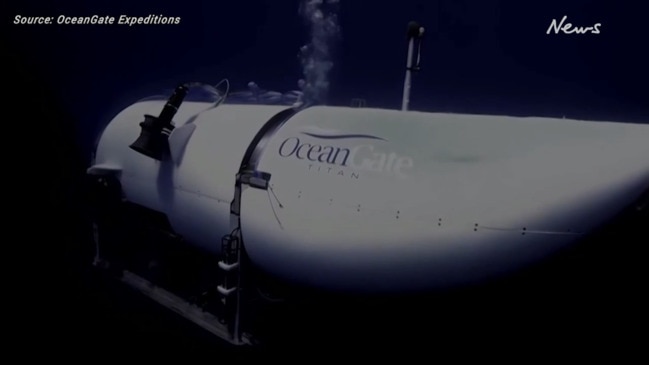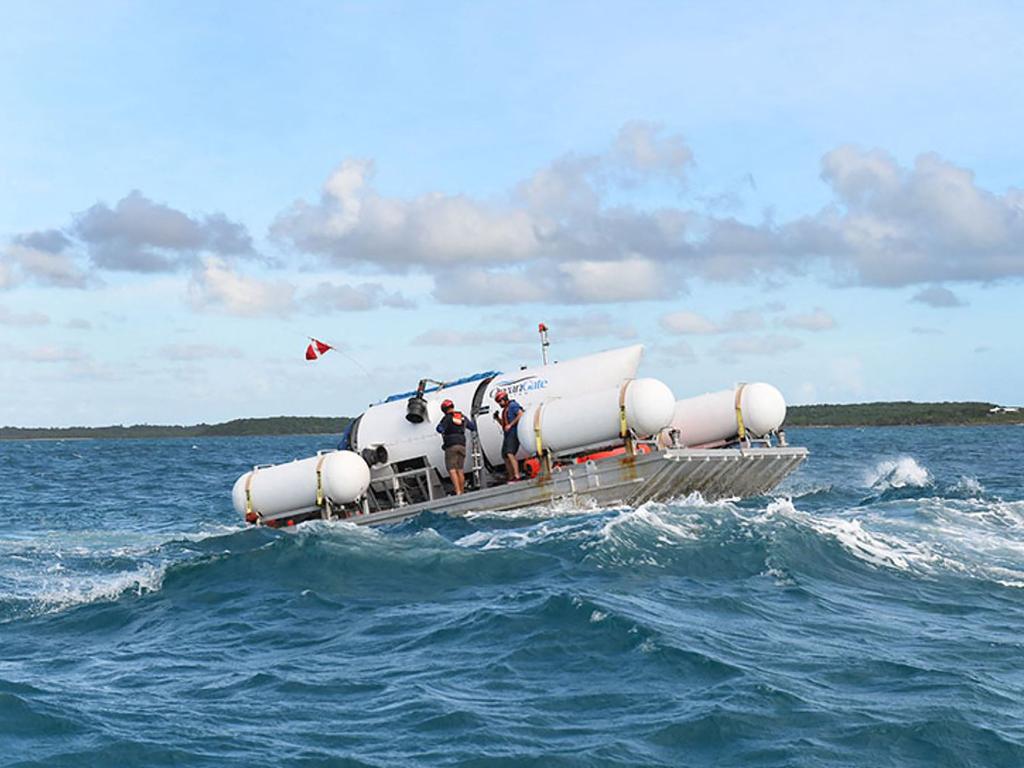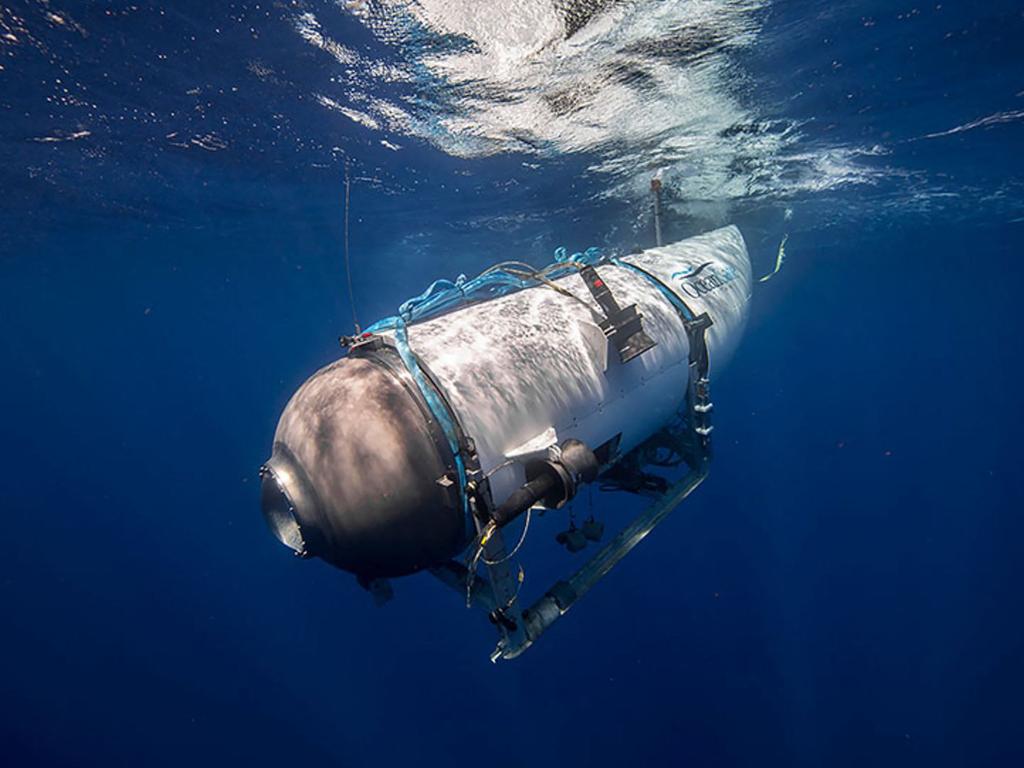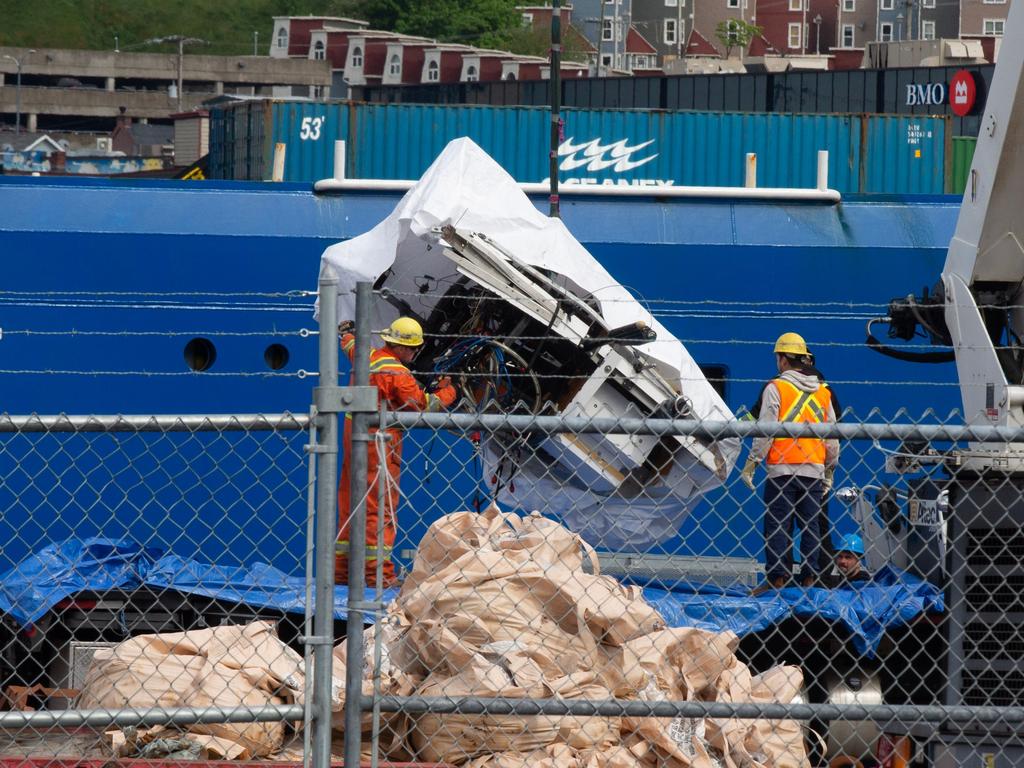Disturbing new theory on sub implosion
A chilling new theory on the Titan sub implosion has emerged as experts claim crew were “dragged to their deaths”.

The doomed Titan sub might have imploded after it was damaged while being dragged out to sea through the choppy waters of the Atlantic, experts said.
Brits Hamish Harding, Shahzada Dawood and his son Suleiman Dawood all died on board on June 18 – along with Stockton Rush, the OceanGate CEO, and Paul-Henri Nargeolet.
Rush came up with the sub’s unique design, hoping it would become a new industry standard.
But engineering experts said moves designed to slash costs and make sea exploration more profitable may have led to the disaster, The Sun reports.

The experts compared the Titan with the Alvin – a US government research sub that has completed more than 4,500 deep sea dives since 1973 with no accidents.
They pointed out a number of design and protocol changes that may have led to the implosion of OceanGate’s sub on its dive to the Titanic wreckage.
Unlike the Titan, the Alvin is a sphere with an all-titanium hull – and it’s transported to dive sites on the deck of a dedicated mothership before a large crane puts it in the ocean.

Meanwhile, Titan had no dedicated mothership.
Instead, it was towed through the rough waters of the North Atlantic by a smaller chartered vessel – the Polar Prince.
The Polar Prince was smaller and older than the ships OceanGate had used in previous years in an apparent cost-cutting move.
Experts told The New York Times that the way the sub was dragged out to sea could have damaged the vessel and led to the catastrophic implosion.

The Alvin travels on a dedicated ship fitted with custom winches, hangars and a machine shop – and a large crane places it into the ocean.
Arnie Weissmann, editor-in-chief of Travel Weekly, took an OceanGate voyage in May – using the same Polar Prince mothership.
He said: “I thought the sub and platform were being tossed around pretty roughly.”
In a column for Travel Weekly, Weissman told a harrowing tale of a “near-disaster for the sub and platform”.

“At the end of the rope that linked the stern of the ship to the platform, we saw that the front of the platform and the sub were underwater,” he wrote.
At the time, crew members thought a buoy might have gotten tangled with the platform and dragged it under – filling the air tanks with water.
But after clearing out the tanks, which took half a day, no fishing line was found tangled – leaving the cause of the incident a mystery.
Asked if towing Titan risked damage, a company spokesman told the Times: “OceanGate is unable to provide any additional information at this time.”
The OceanGate sub vanished with five people on board less than two hours into its descent to the Titanic wreckage.
Search crews frantically looked for the vessel in the Atlantic after it lost communication with just 96 hours of life support.
The sub failed to resurface – with its final “ping” to Polar Prince placing the sub directly above the ruins.
Passenger Mr Harding paid $A380,000 for the trip along with businessman Dawood, 48, and his son Suleman, 19, a student at Glasgow University.
It was led by Rush, 61, and veteran French explorer Henri Nargeolet, 77.
The debris – including a landing frame and the tail cone – was raised 3,800m from the sea floor after it was discovered near the Titanic wreck.
OceanGate came under fire after it emerged crucial safety blunders were made before the dive into the Titanic.
The company faced a lawsuit over fears about the sub’s safety – and a former passenger revealed the vessel also went missing last year.
This story originally appeared on The Sun and is republished here with permission





